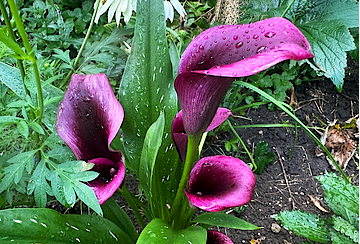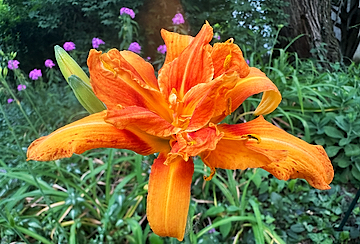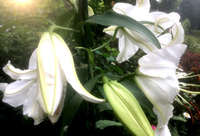
Scorch

June's record-breaking temperatures forced me to water the garden nonstop to alleviate some of the heat stress.
Throughout the entire week, the temperature stayed at around one hundred degrees, without any sign of rain.
This led to an accelerated maturation of the garden, allowing me to start harvesting produce earlier than previous years, even before the Fourth of July.
It also triggered a transition into a late summer stage, characterized by plants shedding extra foliage and the vibrant green enthusiasm of early season being replaced by the more subdued green and bronze appearance of August.
The garden remained mostly undamaged after the scorch, but paused briefly before gearing up for the midsummer bloom.
I've been putting off applying more fertilizer, but it's definitely time to give the perennials a jolt of fresh energy.

Summer Solstice

The season may just be getting started, but by summer solstice, the garden has already decided which plants will shine this year.
The green world's extraordinary ecosystem rotates its focus each year, giving every plant a chance to thrive.
This system coordinates on a large scale to maintain soil nutrient balance and considers environmental factors to determine thriving species, working within the garden hierarchy and spanning years.
Nature's complexity and efficient self-balancing always leave me in awe.
If you are curious which species won the lottery this year, you only have to take a trip to the local plant nursery: you will see it gracing every table in every row, all in bloom and exuding wellbeing in a way that makes its more modest siblings look frail by comparison.
The cucumbers are having a good year, which is surprising considering their preference for rain and aversion to scorching temperatures.
Meanwhile, the tomatoes are struggling with the heat and focusing on growing their leaves.
